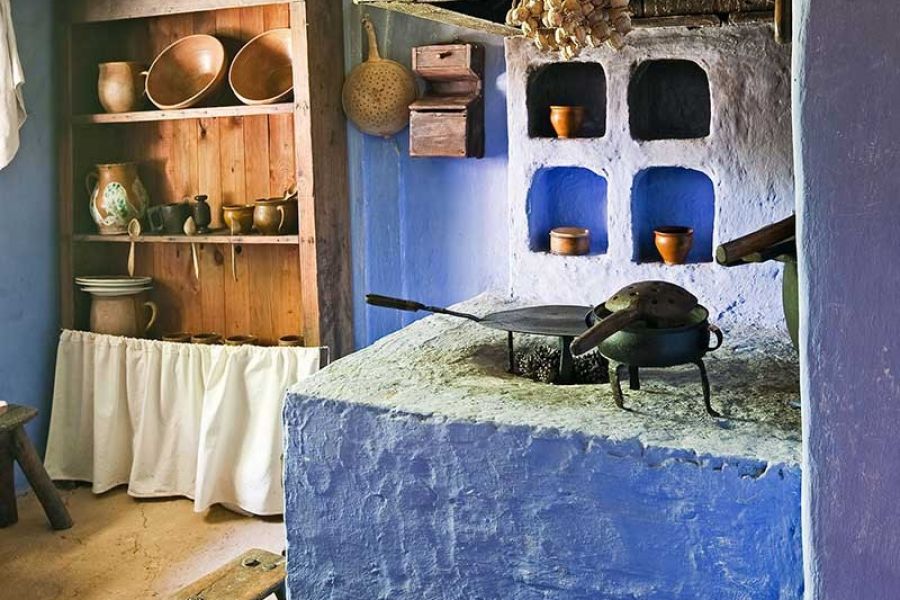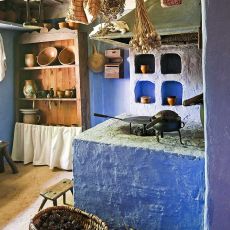Museum of the Mazovian Countryside in Sierpc
09-200 Sierpc skansen@mwmskansen.pl rezerwacje@mwmskansen.pl
Tel. 24 275 28 83 wew. 36 i 37
Description
"Meeting with the tradition and ritual of the old village"
Sierpc is located in the heart of Poland, near the border of the Mazovian and Kuyavian-Pomeranian provinces, by the route no. 10 connecting Toruń to Warsaw. Two rivers flow through the city, Sierpienica and Skrwa, since its inception, providing food for residents and giving the opportunity to develop local crafts, and then industry. The Sierpc Land was inhabited mainly by peasants living in small, several, fewer, homestead habitats. There were also few small and medium-affluent noblemen. Traveling through these lands today it is not difficult to find forgotten villages. There are not many ruined buildings standing alone among the wild. The stories hidden in them are just waiting to be heard. Thanks to the hard work of ethnographers from the Museum of the Mazovian Countryside in Sierpc, some of them managed to save themselves from oblivion. After translocation into the area of the open-air ethnographic museum and renovation, they serve to bring closer the culture, customs and rituals of the former Mazovia.
In the villages surrounding Sierpc already in the nineteenth century, there were many talented folk sculptors whose works decorated both local churches and modest collections in peasant houses. The sculpture, however, was not an occupation that brought great income. For local artists, however, it was a passion that allows to break away from everyday life. They performed their work with simple knives and hand-made tools. Most often, they were not painted. Their themes refer to what surrounded their authors - religion, work in the field and the yard, as well as stories about the deeds of great Poles. Young adepts educated their skills with former masters. With time, local creative groups of wood-carvers from neighboring towns began to emerge. In the early 1960s, there was a dynamically developing Sierpc center of folk sculpture. Artists, however, lacked a place where they could meet, exchange experiences and exhibit their works. It was on their initiative that on 24 March 1971 the Head of the City, in agreement with the Minister of Culture and Art, established the Ethnographic Museum in Sierpc. It covered the area of north-western Mazovia, also called Mazowsze Stary, as its protection.
The basis of the new institution has become the fast-growing collection of folk sculpture. The facility was located within the walls of the town hall. Over time, it has become the cultural center of the region. Competitions and exhibitions were organized here. In 1975, the Ethnographic Park was established as a branch of the Museum. Authorities for the construction of a new institution allocated areas of the former Bojanowo estate. There were several farm buildings and a ruined wooden manor house. His condition, unfortunately, did not allow for renovation. In its place a brick building was built, in which today there is a court exhibition. There is not much left of the park surrounding buildings. However, planting varieties of trees and bushes characteristic for this type of assumptions in Mazovia at the end of the 19th century was made. The young museum developed very dynamically. Further purchases and translocations were made, and field research was carried out in nearby villages. At the end of the 1980s most of the buildings were moved to the open-air museum. In 1987, it was renamed the Museum of the Mazovian Countryside in Sierpc, while the town hall became its branch. Today it is a place of temporary exhibitions and author's evenings. In 2009, part of the institution became the Museum of the Small Town in Bieżuń, focusing on showing the material culture of a small city from the second half of the nineteenth century. The physician's office, his bedroom and living room were reconstructed here. The exhibition "Bieżuń and its inhabitants in ancient times" was also created.
A linear village from the end of the 19th and beginning of the 20th century was recreated in the museum exposition. 10 peasant farms were deployed in such a way as to show the diversity of customs of the inhabitants of individual towns, their property differences, as well as worldview changes in the life of the former village over time. It is based on assumptions according to which the monuments are not only translocated buildings, but also spatial layout and elements included in it, for example, specific for a given area trees and crops. No less important is the reconstruction of residential interiors and micro-areas connected directly with the regions from which specific farms and elements of small architecture originate, such as chapels, road crosses, wells, etc. In home gardens, there are varieties of shrubs and flowers that were popular a hundred years ago, whereas farmhouses can be found next to cottages. The Museum also has several independent architectural ensembles, perfectly complementing the restored village:
- The tavern complex with the tavern from Sochocin - the only facility of this type preserved in the area of north-western Mazovia - still operating a forge from Żuromin and a cottage owned by a poor peasant from Drwał.
- Two court complexes along with landscape parks and court buildings. Beautiful interiors have been prepared with great attention to detail and historical compatibility, reflecting the living conditions and customs of the landowners families just after the January Uprising and the beginning of the 20th century.
- Church and belfry. The temple from the mid-eighteenth century and moved in 2007 from the village of Drążdżewo near Przasnysz serves the celebration of liturgy during the most important museum events and occasional services.
The museum exhibition is constantly changing in accordance with the rhythm of change of seasons and introducing customs related to the most important religious holidays and family celebrations. Visitors will learn, among other things, Easter and Christmas rituals, watch how Boże Ciało, Christmas Eve and Pentecost were celebrated. From April to September they can also take part in thematic outdoor events devoted to rural crafts, children's games, rituals and daily activities of the rural population living in Mazovia. The open-air museum hosts, among others, the celebration of Palm Sunday, Children's Day, as well as honey harvesting, harvest and excavations. Their program and current information can be found at mwmskansen.pl. The museum has also prepared a rich and diversified educational offer for individuals and organized groups of all ages. In it you can find 28 lessons, demonstrations, workshops, educational paths and educational programs tailored to the needs and knowledge of the recipients.
The Museum of the Mazovian Countryside in Sierpc allows visitors to get to know the story of the almost forgotten world. Life in it was very difficult, full of everyday drudgery, but at the same time beauty resulting from simplicity and a sense of community. His time measured the rhythm of field works and holidays. Although it was limited to the nearest area, everything needed for life was there. We encourage you to get to know this micro-world of tradition, rituals and unusual beliefs.
Jarosław Asztemborski
Museum of the Mazovian Countryside in Sierpc
Location
, 09-200 Sierpc


















Comments
comments powered by Disqus